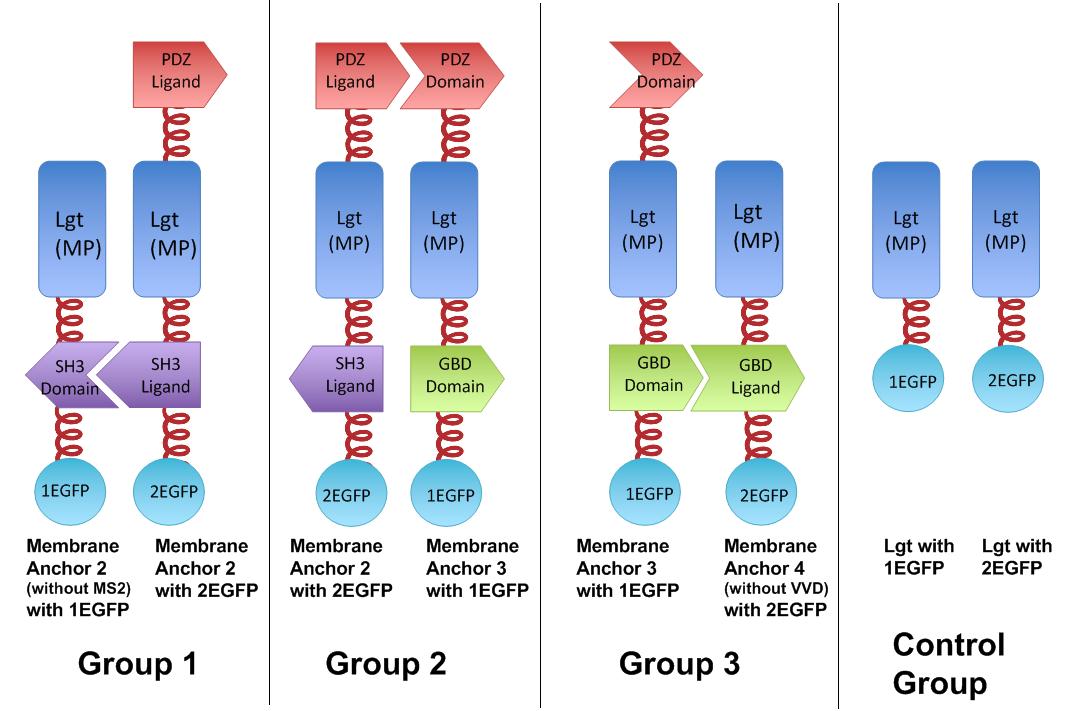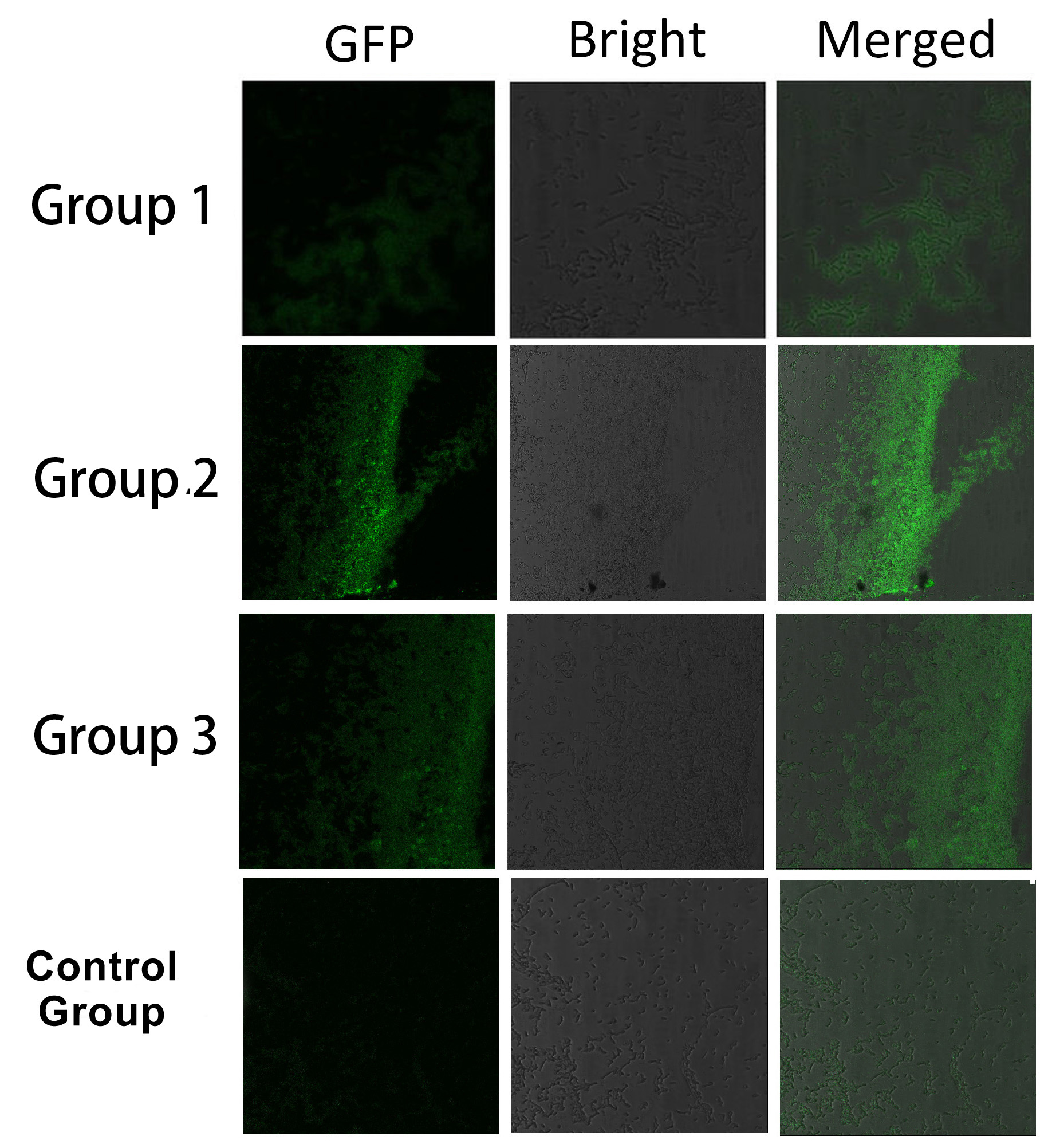Team:SJTU-BioX-Shanghai/Project/project1.2
From 2012.igem.org
AleAlejandro (Talk | contribs) (→Fluorescence Complementation Assay) |
AleAlejandro (Talk | contribs) (→Fluorescence Complementation Assay) |
||
| Line 54: | Line 54: | ||
[[Image:12SJTU、Dimertest.jpg|thumb|700px|center|''Fig.4'' :Group 1, 2, 3 are designed to test the interaction of SH3domain & ligand, PDZdomain & ligand and GBDdomain & ligand respectively. Proteins within each group were expressed in ''E.coli''. If there exists interaction within membrane proteins of each group, we expected to observe fluorescence on ''E.coli'' membrane. Control group is supposed to show much weaker fluorescence]] | [[Image:12SJTU、Dimertest.jpg|thumb|700px|center|''Fig.4'' :Group 1, 2, 3 are designed to test the interaction of SH3domain & ligand, PDZdomain & ligand and GBDdomain & ligand respectively. Proteins within each group were expressed in ''E.coli''. If there exists interaction within membrane proteins of each group, we expected to observe fluorescence on ''E.coli'' membrane. Control group is supposed to show much weaker fluorescence]] | ||
| - | Proteins within each group are coexpressed in ''E.coli''. L-arabinose is not added into culture media until OD value of bacteria culture reaches 0.6. Bacteria are induced at L-Arabinose concentration of 0.2% for 6 hours. Bacteria samples are smeared onto glass slide and observed under laser confocal microscope. | + | Proteins within each group are coexpressed in ''E.coli''. L-arabinose is not added into culture media until OD value of bacteria culture reaches 0.6. Bacteria are induced at L-Arabinose concentration of 0.2% for 6 hours. Bacteria samples are smeared onto glass slide and observed under laser confocal microscope. |
[[Image:12SJTU_SplitEGFP.jpg|thumb|700px|center|''Fig.5'' :Bacteria in Group 1, 2 and 3 all show significantly stronger fluorescence intensity than Control Group. So we can conclude that through recruiting interacting domain and ligand, we can assemble proteins into a complex]] | [[Image:12SJTU_SplitEGFP.jpg|thumb|700px|center|''Fig.5'' :Bacteria in Group 1, 2 and 3 all show significantly stronger fluorescence intensity than Control Group. So we can conclude that through recruiting interacting domain and ligand, we can assemble proteins into a complex]] | ||
| - | + | Thus, it is proved that membrane proteins with interacting proteins could interact and dimerize with each other. Thus, by recruiting ''E.coli'' native membrane protein Lgt, interacting proteins (SH3, PDZ, GBD) and downstream enzymes, we can easily build a ''Membrane Accelerator''. | |
==Reference== | ==Reference== | ||
Revision as of 19:55, 26 September 2012
| ||
|
 "
"

